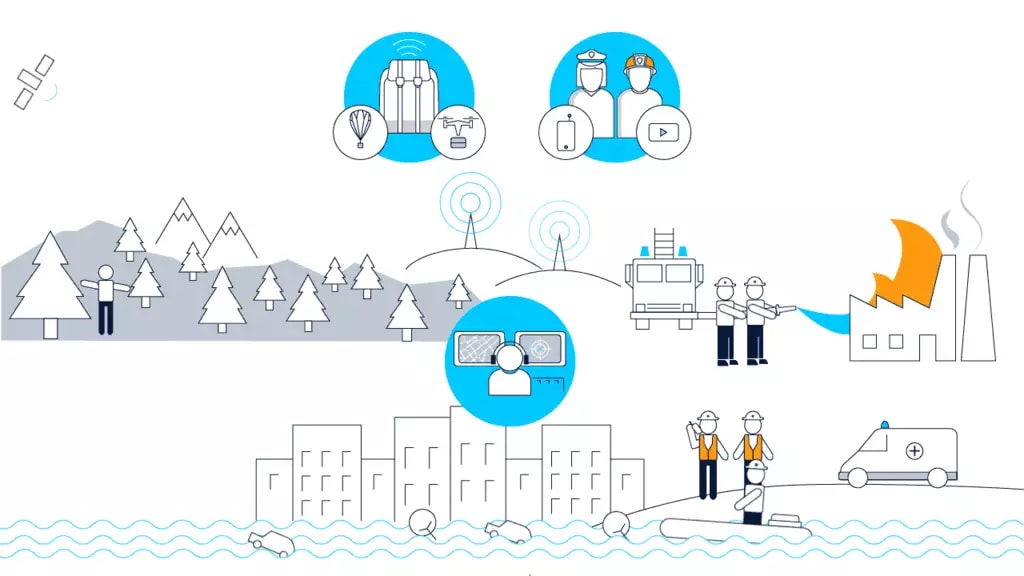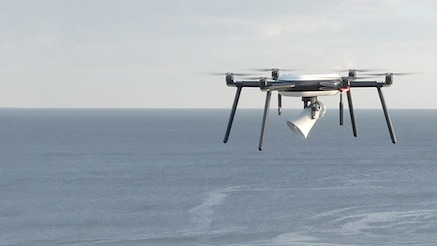Drones: Blazing a new flight path

The 21st century has been witness to a number of disruptive technologies that not only had profound impact but paved the way for further innovation.
Unmanned Aerial Vehicles (UAVs) figure high on that list. The rising manifestation of drones on almost all aspects of consumer, commercial and civil applications is mindboggling. What was once perceived as a platform more suited for the military, drones are now increasingly carrying out a plethora of roles in multiple domains. From disaster response, search and rescue, law enforcement, oil and gas field survey to mining, crop monitoring, infrastructure inspections, terrain mapping and home deliveries, UAVs have emerged as powerful tools in the hands of the industry and governments, alike.
They also come in various shapes and sizes. Ranging from mini, portable to mid and large-size aerial vehicles that can be fixed-wing, multirotor, hybrid and flapped-wing.
Connectivity: the key enabler
The insatiable demand for drone applications cuts across sectors as businesses adopt remote monitoring and automation for swift and efficient operations. The UAV market is fast growing and offers opportunities for both operators and their technology partners.
But there are certain limitations that cap the extent to which UAVs can effectively carry out tasks. The main challenge being that of connectivity. Traditionally, the operational radius of drones has been limited by the range of the radio controller (RC) with most of them flying in low-altitude airspace. Despite fervent efforts, manufacturers have been able to develop proprietary radio control solutions to enhance the range by only a few kilometres and that too within visual line of sight (VLOS).
In that regard, the advent of 4G and the subsequent progression to 5G has proven to be gamechangers for the industry. With superior connectivity, drones are expected to autonomously execute complex missions, stream and upload large data chunks and high-definition video to the cloud and travel far greater distances, including beyond visual line of sight (BVLOS).
“With 4G connectivity to drones for command and control, we can roam beyond a finite radius by handovers between cells,” says Prasanth Ananth, Research Technical Leader in the Enterprise and Industrial Automation Lab at Nokia Bell Labs.
“With 5G connected drones, we further have the advantage of increased bandwidth and lower latency. This enables higher bandwidth drone applications such as live video and allows us to offload computations to the cloud. The cloud can also function as a central orchestrator for a fleet of drones. All this leads to an era of networked multi-drone fleets,” he adds.
Benefiting from 5G
Promising to be the harbinger of next-generation technologies, 5G with its extremely low latency is set to revolutionize drone connectivity. 5G will unlock capabilities such as collection and transmission of data at unprecedented speeds, integration of artificial intelligence (AI), real-time streaming of ultra-high definition images and videos, boost air traffic intelligence by allowing better tracking of drones in flight and even manage a swarm of connected drones.
One major benefit of 5G and the cloud is that it allows better SWaP (Size, Weight and Power) ratios. In other words, it will enable drones of smaller size, lower weight, and lower power consumption. This in turn increases the flight time, which is a major limitation of the current crop of drones.
5G could also help in addressing the most ambitious and challenging aspect of drone operations, the regulation of UAV traffic in an already crowded airspace shared by manned aviation. The need for fail-safe protocols and stringent regulations to conduct secure flights in industrial and public spaces is a critical issue. Hence, legislations are being developed to supervise the use of drones, encourage operators to fly them safely and advise manufacturers to adhere to certain quality standards.
The need to create a transparent and trusted regulatory environment that assuages privacy and safety concerns has never been so acutely felt as it is in the recent times.
In the United States, the Federal Aviation Administration (FAA) is collaborating with NASA and other partner agencies to explore the concept of Unmanned Aircraft System Traffic Management (UTM), a "traffic management" ecosystem for uncontrolled operations that is separate from, but complementary to, the FAA's Air Traffic Management (ATM) system.
In Europe, a similar initiative called ‘U-Space’ is under consideration which aims to establish new procedures allowing drones to access the continent’s airspace in a safe and orderly manner.
Securing the network

As drones become ubiquitous to people’s daily lives and shoulder significant responsibilities, the ability to protect them from malicious attacks becomes paramount. It is imperative that the issue of security gets addressed both from the network and drone application point of view. Similarly, like in other domains, threat monitoring should become a 24/7 exercise.
Calin Miculescu, P.Eng., Director, Sales at Nokia Canada, points to the benefits of 5G slicing and having drones on private wireless from a security standpoint.
“It’s easy to eliminate attack vectors while on entirely private infrastructure, like Private Wireless implementations. E2E 5G slicing further enables this, because once you’re on your own 5G slice, the attack vectors are very much contained. A rigorous plan to counter such threats is the need of the hour but, again, easier to implement than dealing with several vectors at the same time,” he adds.
Soaring to new heights
Drones have emerged as invaluable assets in a technology-driven world where the clamour for tools that complement and, in some instances, supplant human labour is rising steadily. With the evolution of avionics and propulsion technologies, UAVs are fulfilling countless duties in a cost-effective way in various sectors.
They are being equipped and enhanced progressively such as with the addition of powerful cameras, sensors and thermal imaging that help collect valuable data.
“It’s evident that the enhancement of sensors is a continuous process and we’ll soon have cameras capturing 100-megapixel images. Drones equipped with such versatile technologies are redefining missions of the future,” stresses Mika Jarvenpaa, a UAV Operations Specialist at Nokia.
Investments in UAVs are soaring and will continue to do so with the spike in unmanned aerial operations in urban, rural and industrial airspaces. Challenges, however, remain especially in relation to network coverage and stability. Effective and resilient mission critical networks are essential to robust and seamless drone connectivity and while much work is being done in that direction, a lot of ground is yet to be covered.
Nokia has done much work on that front. Nokia Digital Automation Cloud (Nokia DAC), is an end-to-end solution comprising private and secure mobile broadband, cloud connectivity, and a variety of add-on applications such as drones.
“A highly reliable, secure and scalable platform, Nokia Digital Automation Cloud combines data collection applications with unmanned vehicles and other IoT devices,” says Mika.
“With security being synonymous with safety, Nokia DAC provides a solid foundation for UAV use cases. In Finnish, there’s a word ‘turvallisuus’ which means both ‘safety’ and ‘security’. Nokia DAC, being a 3GPP based technology, offers exactly that,” he adds.
Learn more: Nokia Digital Automation Cloud
About Nokia
We create the critical networks and technologies to bring together the world’s intelligence, across businesses, cities, supply chains and societies. With our commitment to innovation and technology leadership, driven by the award-winning Nokia Bell Labs, we deliver networks at the limits of science across mobile, infrastructure, cloud, and enabling technologies.
Adhering to the highest standards of integrity and security, we help build the capabilities we need for a more productive, sustainable and inclusive world. For our latest updates, please visit us online www.nokia.com and follow us on Twitter @nokia.
Media Inquiries:
Nokia
Communications
Phone: +358 10 448 4900
Email: press.services@nokia.com

